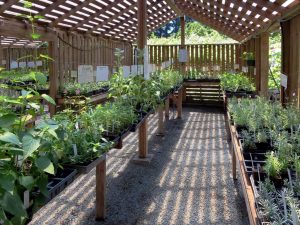What Are Good Tips For Garden Design Ideas and Plans?
The way that the costs are going today it’s no surprise that we are constantly worrying about what’s in our food. From toxins, to additives, to chemicals. It’s not too hard to get the hang of it, and when you finally come up with some garden design ideas, you will find that the whole process is actually quite rewarding.
First off, when you are doing your garden design ideas is to create a list. This list will contain the names of the herbs that you use most often. When you are just starting out you might want to go with simple herbs such as parsley, rosemary, thyme, sage, and peppermint. If you wish to grow indoors, then rose geranium and lemon verbena will do the trick.
The next step in your garden design plans is to visit a nursery near you. Here you can buy herb plants. While you are here, make sure that you ask plenty of questions. For example, ask how much water and light they’re going to need, as well as the soil variant required. Another thing that you will really need to check is whether or not the plants you have chosen are pet friendly. You can read books on this, or call your county to ask.
What Are Good Garden Design Ideas To Grow My Own Herbs?
 There is always a way to grow your own herbs, even if you happen to reside in a small apartment. All you need to do is obtain the right potting soil and some fertilizer, making sure that the fertilizer is organic. In addition to this you will need some containers, preferably eight inches by eight inches. Make sure that the trays can drain properly, and to accomplish this you will want to make sure there is a layer of gravel in the trays.
There is always a way to grow your own herbs, even if you happen to reside in a small apartment. All you need to do is obtain the right potting soil and some fertilizer, making sure that the fertilizer is organic. In addition to this you will need some containers, preferably eight inches by eight inches. Make sure that the trays can drain properly, and to accomplish this you will want to make sure there is a layer of gravel in the trays.
To encourage growth and survival, your indoor herbs need to be watered twice every week. There are some herbs that will need to be replaced each year, and then there are some that will reseed, which are known as perennials. Remember that these garden design ideas will help you keep your plants well groomed, as doing this will keep your herbarium looking great.
When making your garden design plans, try to remember that herbs require anywhere between five and eight hours of sunlight. If you can, put your plants near a southern or western window. Of course not everyone will have the right window for this, and if that is the case, then an energy efficient grow light is necessary. Yes, these lights are expensive, but they will pay for themselves in the long run. You can also purchase indoor greenhouse kits which will retain heat and humidity.
Designing an outdoor herb garden will require some precise measurements. Take a look at the space you have to work with. What kind of space do each of your herbs require? Keep in mind that culinary herbs must have five hours of sunlight in order to thrive.
Next you need to work on your garden design plans. Using graph paper you can make a diagram of the overall garden space. Remember that there are some herbs which will be extremely tall while others will not grow tall at all. Make sure that the tall plants are placed in the rear so that smaller plants will obtain the right amount of sunlight. These are a few things that you will need to do with your garden design ideas to make sure that the garden turns out well. If you need more hints and tips you can always turn to the internet or other gardeners!
One of the greatest garden design ideas is to put the plants in a crescent shape, putting the smallest of plants out on the tips. The closer you get to the center the larger the plants would be. If you want to get really creative, you can put a fountain within the crescent.
One of the better garden design ideas is to put the herb garden next to your kitchen door. Having the ability to just walk out and get what you need from the garden is great.
Herb garden designs can vary from the simple square where herbs are grown to elaborate shapes and colors schemed garden beds and, even though there are guidelines that helps to ease the learning curves. Any design that might be inspiring to begin with will need be adapted to the garden’s environment and personal taste.
What Practical Herbal Garden Design Ideas Work Well?
Following are a few garden design ideas to get to the basics off the ground. The things to consider before designing an Herb Garden are:
Before designing a herb garden, one should consider the use that will be made of this garden. For instance, if you plan to grow culinary plants to use when preparing meals then it would be preferable to set it near your kitchen, making sure that you will have an easy access to the herbs when you need them. Thought this may seem an easy task, in all circumstances, the herbs will need 4 to 6 hours of sunlight daily so location is very important to grow healthy strong plants. Most herbs love sunlight thought certain varieties prefers less hours of sunlight to strictly shaded areas. Know your herbs before planning the space they will occupy. Certain design will incorporate a focal point in its center through the addition of a sundial, birdbath or a fountain etc…The background such as a wall or a fence can also be used in the design to add dramatic effects to the overall look of your garden.
Are Formal Herbal Designs Popular?
Another popular design is the formal design which is a symmetrical use of herbal plants that are placed in geometric designs and makes use of textures. Formal designs makes use of circles, triangles and squares as basic figures to plan the design. The chosen herbs are placed according to height and color. Knot gardens is also widely used design and are often associated with a focal point such as a statue.They are known to be often edged with low growing hedges. Spiral herb gardens take on a circular shape and are generally built up in tiers. While these are also popular, the results might seem less formal in appearance.
What Are Basic Herb Garden Design Ideas?
Design using a theme. One way to design a herb garden is by following a theme such as choice of herbs, a specific line of colors, aromas etc… If you choose this path, you can elaborate even deeper by using various themes in separate garden beds. A garden bed of various plants sharing the same color is an example, or various types of mints can be grouped together and fill the surrounding air with their aromatic scents. For instance, herbs sharing a specific color can be grouped together in one area. In another, you may have a scented herb garden filled with aromatic herb plants such as various types of mint. Another option would be to make usage-specific garden beds such as a Italian herb garden bed, a variety of herbs destined to herbal teas and so on.



